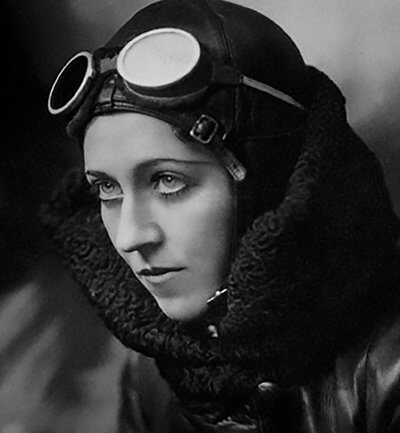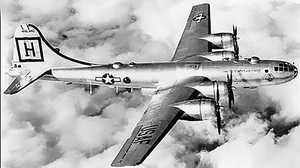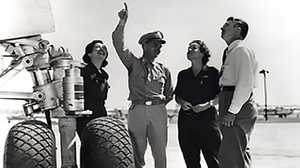Amy Johnson
1903 - 1941

On May 24, 1930, Amy Johnson, a young British pilot from Hull, touched down in Darwin, Australia. She had just completed an 8,600-mile journey alone in a two-year-old de Havilland Moth she had named Jason. The journey had taken her 19 1/2 days. The press and public were ecstatic. The "Daily Mail" awarded her [sterling]10,000, "the largest amount ever paid for a feat of daring." The King and Queen of England, the British prime minister, and Charles Lindbergh were among the many dignitaries who sent her congratulatory wishes. And she was met wherever she went by scores of admiring fans. But the young aviator, the first woman to fly solo from England to Australia, felt like a failure. She'd set out to break the record time for the trip, set by the Australian pilot, Bert Hinkler in 1928. Hinkler had made the solo flight from England to Australia in 15 days; Johnson had taken four days longer. Although Johnson had been planning to fly herself back to Europe, the stress of her public appearances and the degree of her disappointment overwhelmed her. She returned home on a commercial flight.
Johnson had learned to fly in 1928 at the London Aeroplane Club. Her first instructor told her she would never become an aviator. And in fact it did take her 16 hours of dual flying -- twice as long as was typical -- before she would take her first solo flight. She finally earned her first pilot's license in July of 1929. Later that year, after demonstrating an unusual interest for a female aviator of that time in the mechanics of flying, she became the first British woman to qualify as a ground engineer.
In early 1930, Johnson determined to challenge -- and break -- Hinkler's record. She won the financial backing of a member of the British aristocracy, Lord Wakefield, and with only 75 hours of flying time she set off from Croydon in South London on May 5, 1930. Later, Johnson would remark that she had the audacity to undertake the journey because she didn't really know what she was getting herself into. "The prospect did not frighten me, because I was so appallingly ignorant that I never realised in the least what I had taken on."
On the fourth day a sandstorm forced her to land and she spent several hours clutching her gun, fearing that the desert dogs she could hear barking in the distance were about to rip her to shreds. Several days later, after leaving Karachi in what is now Pakistan, she realized she didn't have enough fuel to get her to her next stop, so she made an unscheduled landing that sent military men scurrying from a parade ground. Johnson flew through monsoon rains and in blistering heat. Along the way, she made several crash landings that caused delays while improvised repairs were made to her plane. And at one point, after making an unplanned stop in an Indonesian village, she was reported missing.
Perhaps not achieving her record-breaking goal made Johnson all the more determined to attempt other long-distance flying feats. In January 1931 she attempted to fly across Siberia to China, but gave up at the end of the month, crash-landing near Warsaw. In 1932 she beat by eleven hours the record speed for the London to Cape Town journey set earlier by her new husband, Jim Mollison. The following year the newly-weds undertook a joint flying mission: The two took off from Wales for New York. Ignoring his wife's advice, Mollison refused to refuel in Boston. They ran out of gas over an airstrip in Connecticut and the couple overshot the runway trying to land their plane in the dark. They both ended up in a hospital. When American aviator Amelia Earhart heard about the accident she invited them to stay at her house while they recovered.
After Germany invaded Poland, Johnson was called on to contribute to the war effort. The Royal Air Force invited her to join the newly established Air Transport Auxiliary, which was ferrying aircraft from factories to air bases. Ironically, Johnson would be the first to die though she was one of the most experienced aviators to join the ATA. In January 1941, one headline read, "AMY JOHNSON BALES OUT, MISSING." Johnson had been on a routine mission, flying a plane from Prestwick to Kidlington, at the time of the crash. Eyewitnesses reported seeing Johnson's plane plummet into the Thames Estuary, way off its designated course. Her body was never found.
Johnson had taken off in weather conditions that would have deterred a more cautious pilot. But her commanding officer Pauline Gower, who headed the women's section of the ATA, defended Johnson's record saying that the aviator would never had done anything reckless or unwise. Given Johnson's years as a record-breaking, long-distance flyer who had frequently taken unnecessary risks, Gower's statement was plainly not true. On the other hand, it was probably in tune with popular sentiment; for many Britons, the pioneering aviator from Yorkshire was an inspiration and would forever remain their "Wonderful Amy."







